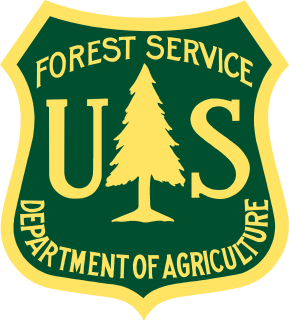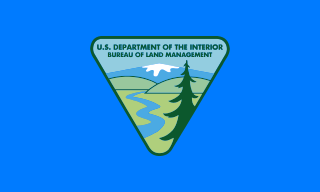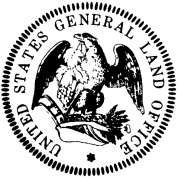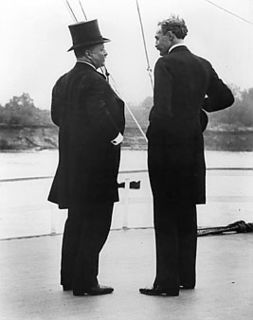
The United States Forest Service (USFS) is an agency of the U.S. Department of Agriculture that administers the nation's 154 national forests and 20 national grasslands. The Forest Service manages 193 million acres (780,000 km2) of land. Major divisions of the agency include the Chief's Office, National Forest System, State and Private Forestry, Business Operations, and Research and Development. The agency manages about 25% of federal lands and is the only major national land management agency not part of the U.S. Department of the Interior, which manages the National Park Service, the U.S. Fish and Wildlife Service, and the Bureau of Land Management.

In the United States, national forest is a classification of protected and managed federal lands. National forests are largely forest and woodland areas owned collectively by the American people through the federal government, and managed by the United States Forest Service, a division of the United States Department of Agriculture. The U.S. Forest Service is also a forestry research organization who provides financial assistance to state and local forestry industry. As of 2020, there are 154 national forests in the United States.

The Bureau of Land Management (BLM) is an agency within the United States Department of the Interior responsible for administering federal lands. Headquartered in Grand Junction, Colorado, and with oversight over 247.3 million acres (1,001,000 km2), it governs one eighth of the country's landmass.

The Coastal Zone Management Act of 1972 is an Act of Congress passed in 1972 to encourage coastal states to develop and implement coastal zone management plans (CZMPs). This act was established as a United States National policy to preserve, protect, develop, and where possible, restore or enhance, the resources of the Nation's coastal zone for this and succeeding generations.
Natural ResourcesCanada, also known as the Department of Natural Resources, is the department of the federal Government of Canada responsible for natural resources, energy, minerals and metals, forests, earth sciences, mapping, and remote sensing. It was created in 1995 by amalgamating the now-defunct Department of Energy, Mines and Resources with the Department of Forestry.

The General Land Office (GLO) was an independent agency of the United States government responsible for public domain lands in the United States. It was created in 1812 to take over functions previously conducted by the United States Department of the Treasury. Starting with the passage of the Land Ordinance of 1785, which created the Public Land Survey System, the Treasury Department had already overseen the survey of the "Northwest Territory", including what is now the state of Ohio.
The Canadian Forest Service is a sector of the Canadian government department of Natural Resources Canada. Part of the federal government since 1899, the CFS is a science-based policy organization responsible for promoting the sustainable development of Canada's forests and competitiveness of the forest sector to benefit present and future Canadians. Some of the research areas that the CFS is involved in include; forest fire, climate change, silviculture, soils, insects and disease, remote sensing and forest management. Since 1991 the sector has produced an annual report, The State of the Forest in Canada, which describes the status of the nation's forests and the forest industry.

The Soil Conservation and Domestic Allotment ActPub.L. 74–461, enacted February 29, 1936) is a United States federal law that allowed the government to pay farmers to reduce production so as to conserve soil and prevent erosion.

The Northern Development, Mines, Natural Resources and Forestry is a government ministry of the Canadian province of Ontario that is responsible for Ontario's provincial parks, forests, fisheries, wildlife, mineral aggregates and the Crown lands and waters that make up 87 per cent of the province. Its offices are divided into Northwestern, Northeastern and Southern Ontario regions with the main headquarters in Peterborough, Ontario. The current minister is Greg Rickford.

The National Forest Management Act (NFMA) of 1976 is a United States federal law that is the primary statute governing the administration of national forests and was an amendment to the Forest and Rangeland Renewable Resources Planning Act of 1974, which called for the management of renewable resources on national forest lands. The law was a response to lawsuits involving various practices in the national forest, including timber harvesting., Zieske v Butz was the lawsuit brought by members of the Pt Baker Association on Prince of Wales Island against the US Forest Service's first environmental impact statement. The suit halted logging on the NW tip of the island which consisted of 400,000 acres and resulted in a call by the timber industry for Congressional action to undo the lawsuit. Representative Foley noted on the floor that six other suits were blocking logging with holdings similar to Zieske v Butz.
The Forest and Rangeland Renewable Resources Planning Act of 1974(RPA) is a United States federal law which authorizes long-range planning by the United States Forest Service to protect, develop, and enhance the productivity and other values of forest resources. RPA requires that a renewable resource assessment and a Forest Service plan be prepared every ten and five years, respectively, to plan and prepare for the future of natural resources. RPA was reorganized, expanded, and otherwise amended by the National Forest Management Act of 1976.

The Multiple Use - Sustained Yield Act of 1960 is a federal law passed by the United States Congress on June 12, 1960. This law authorizes and directs the Secretary of Agriculture to develop and administer the renewable resources of timber, range, water, recreation and wildlife on the national forests for multiple use and sustained yield of the products and services.
The Forest Service Organic Administration Act of 1897 provided the main statutory basis for the management of forest reserves in the United States, hence the commonly used term "Organic Act". The legislation's formal title is the Sundry Civil Appropriations Act of 1897, which was signed into law on June 4, 1897, by President William McKinley.
The Cooperative Funds Act is a United States law, or series of laws, which authorized the United States Forest Service (FS) to collect donations from private partners to perform FS work. Contributions had to be voluntary, and by cash, check, or money order only. It was also stipulated that there could be no conflict of interest between the donor and the FS.

Norman Irving Wengert was an American political scientist who wrote about the politics of natural resources, advanced a seminal theory of the "politics of getting", and had a number of significant roles in his public and academic career. He was born in Milwaukee, Wisconsin to Eugene F. and Lydia Semmann Wengert. He pioneered the revival of the study of political economy in the United States with publication of Natural Resources and the Political Struggle, and later authored more than fifty monographs and studies on the political economy and public administration of environmental resources. His scholarship explored the politics of natural resources and environmental policy formation and administration, with emphases in national energy policy, urban water planning and management, land use planning and controls, national forest management, and citizen participation in administrative processes.

Starting in 1876, and undergoing a series of name changes, the U.S. Forest Service grew to protect and use millions of acres of forest on public land. Gifford Pinchot, an early advocate of scientific forestry, along with President Theodore Roosevelt and conservation organizations, led the effort to manage forest for the public good.

The Bankhead–Jones Farm Tenant Act of 1937 was passed on July 22, 1937 and authorized acquisition by the federal government of damaged lands to rehabilitate and use them for various purposes. Most importantly, however, the law authorized a modest credit program to assist tenant farmers to purchase land, and it was the culmination of a long effort to secure legislation for their benefit.
The McSweeney-McNary Act of 1928 is an article of American legislation that was enacted on May 22nd, 1928. The law created the directive to implement "…a comprehensive survey of the present and prospective requirements for timber and other forest products of the United States." The Act was sponsored by Senator Charles L. McNary from Oregon and Senator John Sweeney from Ohio.